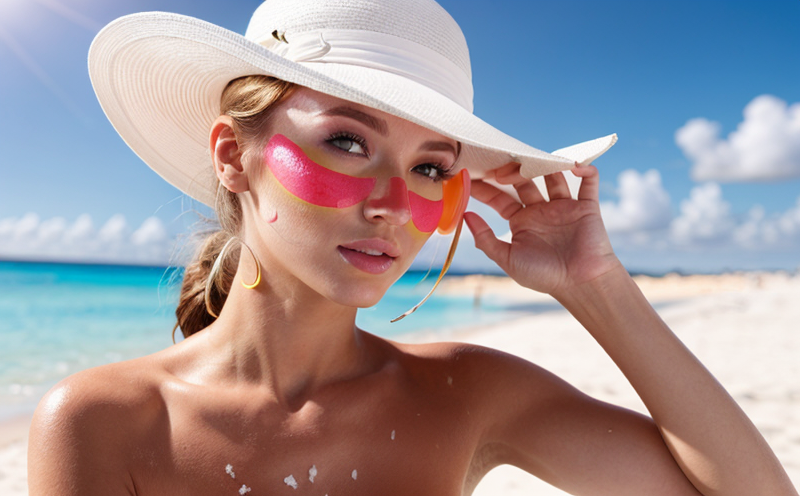Sunscreen Efficacy Testing after Mechanical Rubbing
Understanding sunscreen efficacy is critical in ensuring that products provide adequate protection against ultraviolet (UV) radiation. Sunscreens are designed to absorb, scatter, or reflect UV light, thereby preventing its penetration into the skin and reducing the risk of sunburns and long-term health impacts such as premature aging and skin cancer.
One key factor affecting sunscreen performance is mechanical rubbing. This can occur during application, when clothing comes in contact with the skin, or from other daily activities. The friction caused by these interactions can lead to a significant reduction in the sun protection factor (SPF) of sunscreens, thereby diminishing their effectiveness.
Testing sunscreen efficacy after mechanical rubbing is essential for several reasons. Firstly, it helps manufacturers ensure that their products maintain their SPF levels even under conditions where friction may occur. Secondly, this testing provides valuable data to regulatory bodies and consumers about the true performance of sunscreens in real-world scenarios. Lastly, such tests are crucial for compliance with international standards like ISO 21362:2018, which specifies methods for determining the UV protection factor (UVA-PF) of sunscreen products after mechanical rubbing.
The testing process involves applying a known amount of sunscreen to a specified area on a standardized skin substitute or human volunteer. The specimen is then subjected to mechanical rubbing using a defined method, typically involving a circular motion with a specific force and speed. After the rubbing procedure, the SPF value of the sunscreen is measured again. Any reduction in SPF indicates the loss of protection due to mechanical friction.
The importance of this testing cannot be overstated for several reasons. Sunscreen manufacturers rely on accurate and reliable data to improve product formulations and ensure regulatory compliance. Regulatory bodies use these test results to assess whether products meet safety and efficacy standards. Consumers, too, need this information to make informed decisions about their sun protection choices.
Testing after mechanical rubbing is particularly important for sunscreens that are formulated with ingredients known to be sensitive to frictional forces. These may include certain chemical filters or physical blockers like zinc oxide or titanium dioxide. By conducting these tests, manufacturers can identify potential issues early in the development process and implement necessary adjustments to enhance product performance.
In conclusion, sunscreen efficacy testing after mechanical rubbing is a vital component of quality assurance in the cosmetics industry. It ensures that sunscreens continue to provide effective protection even under conditions where friction may occur, thereby safeguarding consumers against the risks associated with UV exposure.
Why It Matters
The results of sunscreen efficacy testing after mechanical rubbing directly impact consumer safety and satisfaction. When a sunscreen fails this test, it means that its SPF has significantly reduced due to frictional forces, which could lead to inadequate protection against UV radiation.
For manufacturers, these tests are essential for product development and quality control. By identifying weak points in the formulation early on, they can make necessary adjustments to improve performance. This not only enhances consumer trust but also helps companies avoid costly recalls or legal issues related to non-compliance with safety standards.
Regulatory bodies rely on these test results to enforce compliance with international standards and guidelines. Non-conforming products could be flagged for potential recall, which could have significant implications for the company's reputation and financial health.
Consumer trust is paramount in the cosmetics industry, especially when it comes to products that are designed to protect against harmful environmental factors. Providing accurate and reliable test results builds confidence among consumers who rely on these products for their daily skincare routines.
In summary, sunscreen efficacy testing after mechanical rubbing ensures product safety, enhances consumer satisfaction, supports regulatory compliance, and promotes brand integrity in the highly competitive cosmetics market.
Industry Applications
The application of sunscreen efficacy testing after mechanical rubbing extends beyond just sunscreens. It also encompasses other cosmetic products that may come into contact with skin during use or through daily activities. These include:
- Tan accelerators
- Skin care lotions and moisturizers
- Makeup foundations and powders
- Lip balms and lipsticks
- Mascara and eyeliner
These products, when applied or worn over sunscreen, can potentially reduce its efficacy. By testing these products in conjunction with sunscreens, manufacturers can ensure that their complete product lines provide consistent protection against UV radiation.
Use Cases and Application Examples
- Sunscreen Formulation Development: Testing after mechanical rubbing helps identify which ingredients or formulations are most susceptible to frictional forces. This allows manufacturers to optimize their formulas for better stability and performance.
- Regulatory Compliance: Many regulatory bodies, including the FDA in the United States and the European Commission, require this testing as part of the approval process for sunscreen products. Ensuring compliance helps companies avoid legal issues and potential recalls.
- Consumer Education: Providing accurate test results to consumers can help them make informed decisions about their sun protection choices. This transparency builds trust and enhances brand loyalty.
In practice, these tests are conducted in specialized laboratories equipped with the necessary instrumentation and expertise. The testing process involves applying a known amount of sunscreen to a standardized skin substitute or human volunteer, subjecting it to mechanical rubbing, and then measuring the SPF value before and after the procedure.
For example, a company might test their new formula against established brands to ensure that it meets or exceeds industry standards. Another scenario could involve testing different formulations of the same product under varying conditions to identify optimal performance parameters.





